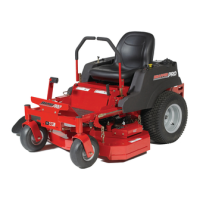RegWPMaintenance
BatteryService
Checking Battery Voltage
AWARNiNG
Keepopen flames and sparksawayfrom the battery;
the gassescomingfromit are highly explosive.
Ventilatethe batterywell duringcharging.
A voltmeter can be used to determine condition of battery.
Whenengine is off, the voltmeter shows battery voltage,
which should be 12 volts. When engine is running, the
voltmeter shows voltage of charging circuit which normally
is 13 to 14 volts.
A dead battery or one too weakto start the engine may not
meanthe battery needsto be replaced.For example, it may
meanthat the alternator is not charging the battery properly.
If there is any doubt aboutthe causeof the problem, see
your dealer.If you needto replacethe battery,follow the
steps under Cleaningthe Battery & Cablesin the Regular
MaintenanceSection.
Charging a CompJeteJyDischargedBattery
1. Beaware of all the safety precautions you should
observeduring the charging operation. If you are
unfamiliar with the use of a battery charger and
hydrometer, havethe battery serviced byyour dealer.
2. Add distilled water sufficient to cover the plate (fill to the
proper levelnearthe end of the charge). If the battery is
extremely cold, allow it to warm before adding water
becausethe water levelwill rise as it warms. Also, an
extremely cold battery will not accept a normal charge
until it becomes warm.
3. Always unplug or turn the charger off before attaching
or removing the clamp connections.
4. Carefullyattachthe clamps to the battery in proper
polarity (usually red to [+] positive and black to [-]
negative).
5. While charging, periodically measurethe temperature of
the electrolyte, if the temperature exceeds 125° F (51.6°
C), or if violent gassing or spewing of electrolyte occurs,
the charging rate must be reduced or temporarily halted
to prevent battery damage.
6. Chargethe battery until fully charged (until the specific
gravity of the electrolyte is 1.250 or higher and the
electrolyte temperature is at least 60° F).The best
method of making certain a battery is fully charged, but
not over charged, is to measurethe specific gravity of a
cell onceper hour.The battery is fully chargedwhen the
cells are gassing freely at low charging rate and less
than 0.003 change in specific gravity occurs over a three
hour period.
JumpStarting With AuxiJiary (Booster)Battery
Jump starting is not recommended. However,if it must be
done, follow these directions. Both booster and dis-charged
batteries should be treated carefully when using jumper
cables. Followthe steps below EXACTLY,being careful not to
cause sparks. Referto Figure48.
1. Both batteries must be of the samevoltage.
2. Position the vehicle with the booster battery adjacentto
the vehicle with the discharged battery so that booster
cables can be connected easily to the batteries in both
vehicles. Makecertain vehicles do not touch eachother.
3. Wear safety glasses and shield eyes andface from
batteriesat all times. Besure vent caps aretight. Place
damp cloth overvent caps on both batteries.
4. Connectpositive (+) cable to positive post of discharged
battery (wired to starter or solenoid).
5. Connectthe other end of same cable to same post
marked positive (+) on booster battery.
6. Connectthe second cable negative (-) to other post of
booster battery.
7. Makefinal connection on engine block of stalled vehicle
away from battery. Do not leanover batteries.
8. Start the engine of the vehicle with the booster battery.
Wait a few minutes, then attempt to start the engine of
the vehicle with the discharged battery.
9. If thevehicle does not start after cranking for thirty
seconds, STOPPROCEDURE.Morethan thirty seconds
seldom starts the engine unless some mechanical
adjustment is made.
10. After starting, allow the engineto returnto idle speed.
Removethe cable connection at the engineor frame.
Then remove the other end of the same cable from the
booster battery.
11. Removethe other cableby disconnecting at the
discharged battery first and then disconnect the
opposite end from the booster battery.
12. Discard the damp cloths that were placed over the
batteryvent caps.
37

